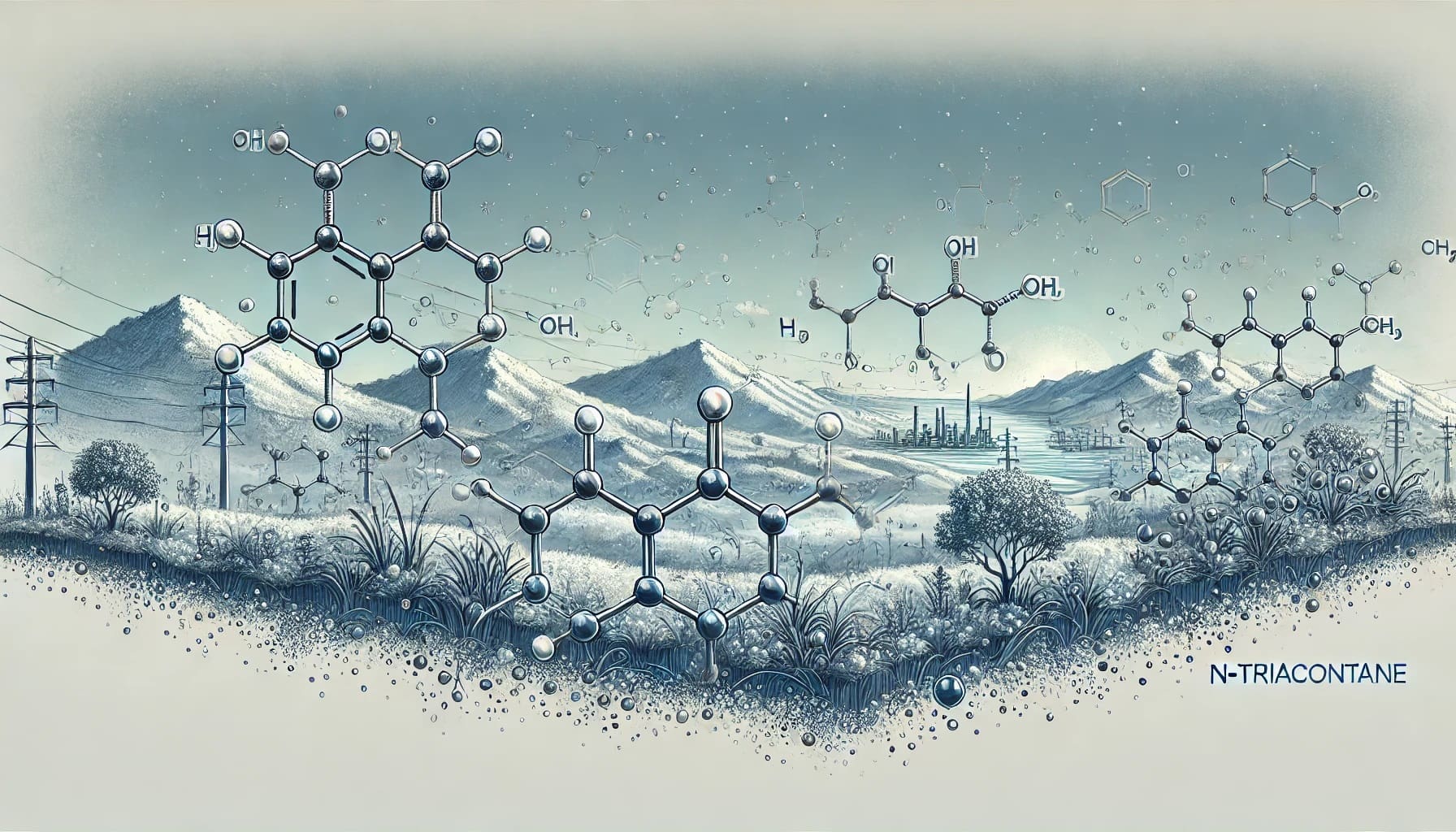
n-Triacontane might sound like a mouthful, but it's a fascinating compound with some cool properties. What is n-Triacontane? It's a hydrocarbon, specifically an alkane, with the formula C30H62. This means it has 30 carbon atoms and 62 hydrogen atoms. Found in beeswax and plant cuticles, it plays a role in waterproofing and protecting surfaces. Why should you care? Because understanding n-Triacontane helps in fields like chemistry, biology, and even materials science. From its melting point to its use in research, this compound has a lot to offer. Ready to learn more? Let's dive into 20 intriguing facts about n-Triacontane!
What is n-Triacontane?
n-Triacontane is a fascinating chemical compound with a variety of uses and properties. This hydrocarbon, part of the alkane family, has a long, straight-chain structure. Let's dive into some intriguing facts about n-Triacontane.
-
Chemical Formula: The chemical formula for n-Triacontane is C30H62. It consists of 30 carbon atoms and 62 hydrogen atoms.
-
Molecular Weight: n-Triacontane has a molecular weight of 422.81 g/mol. This makes it a relatively heavy molecule compared to smaller hydrocarbons.
-
Melting Point: The melting point of n-Triacontane is around 66°C (150.8°F). This property makes it solid at room temperature.
-
Boiling Point: Its boiling point is approximately 450°C (842°F). This high boiling point indicates strong intermolecular forces.
Physical Properties of n-Triacontane
Understanding the physical properties of n-Triacontane helps in recognizing its applications and behavior in different environments.
-
Appearance: n-Triacontane appears as a white, waxy solid. Its texture and color are similar to paraffin wax.
-
Solubility: It is insoluble in water but soluble in organic solvents like benzene and chloroform. This makes it useful in various chemical processes.
-
Density: The density of n-Triacontane is about 0.81 g/cm³. This is less dense than water, allowing it to float.
-
Odor: n-Triacontane is odorless. This property makes it suitable for applications where scent is a concern.
Uses of n-Triacontane
n-Triacontane has several practical applications due to its unique properties.
-
Lubricants: It is used in the production of lubricants. Its high melting point and stability make it ideal for this purpose.
-
Cosmetics: n-Triacontane is found in some cosmetic products. Its waxy nature helps in creating smooth textures.
-
Candles: It is used in candle making. The compound's waxy consistency and burning properties are beneficial.
-
Research: Scientists use n-Triacontane in research to study hydrocarbon behavior and properties.
Biological Aspects of n-Triacontane
n-Triacontane also plays a role in biological systems and studies.
-
Plant Waxes: It is a component of plant cuticle waxes. This helps protect plants from water loss and pests.
-
Insect Pheromones: Some insects produce n-Triacontane as part of their pheromones. This aids in communication and mating.
-
Biodegradability: n-Triacontane is biodegradable. Microorganisms can break it down, making it environmentally friendly.
Interesting Facts about n-Triacontane
Here are some lesser-known yet fascinating facts about n-Triacontane.
-
Crystallization: n-Triacontane can form beautiful crystals. This property is often studied in crystallography.
-
Synthetic Production: It can be synthesized in laboratories. This allows for controlled studies and applications.
-
Historical Use: Historically, n-Triacontane was used in early forms of wax and lubricants. Its long history showcases its enduring utility.
-
Thermal Stability: It has excellent thermal stability. This makes it useful in high-temperature applications.
-
Non-Toxic: n-Triacontane is non-toxic. This safety feature broadens its range of applications in various industries.
The Final Word on n-Triacontane
n-Triacontane, a fascinating hydrocarbon, plays a crucial role in various industries. Its presence in beeswax and plant cuticles highlights its natural origins. This compound's unique properties make it valuable in scientific research and industrial applications. From its role in waterproofing to its use in lubricants, n-Triacontane proves its versatility. Understanding these facts not only broadens our knowledge but also underscores the importance of hydrocarbons in everyday life. Whether you're a student, a researcher, or just curious, knowing about n-Triacontane enriches your appreciation for the complex world of chemistry. Keep exploring, stay curious, and remember that even the simplest molecules can have significant impacts.
Was this page helpful?
Our commitment to delivering trustworthy and engaging content is at the heart of what we do. Each fact on our site is contributed by real users like you, bringing a wealth of diverse insights and information. To ensure the highest standards of accuracy and reliability, our dedicated editors meticulously review each submission. This process guarantees that the facts we share are not only fascinating but also credible. Trust in our commitment to quality and authenticity as you explore and learn with us.


